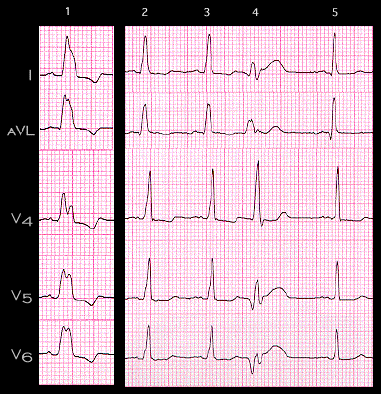
In incomplete left bundle branch block, the QRS complex duration is between 0.10 and 0.12 seconds (100 and 120ms) and the small initial q waves in leads I, V5, and V6 is usually absent. These ECGs are from a 66 year old woman and demonstrate a normal QRS complex and complexes with both incomplete and complete left bundle branch block. Complex #1 demonstrates complete left bundle branch block with a QRS duration of approximately 130ms, absent Q waves in I, V5 and V6, the characteristic prominent notching of the QRS complex and secondary T wave changes. Complexes #2 and 3 show incomplete left bundle branch block in with a QRS duration of approximately 110ms, without Q waves in 1, V5 and V6, without obvious notching of the QRS complex and with only minor T wave changes. Complex # 4 is a ventricular premature beat and complex #5 is normal. Its QRS duration is 80ms, a small initial Q wave is present in leads 1, and 2 and the T waves are nearly normal.
